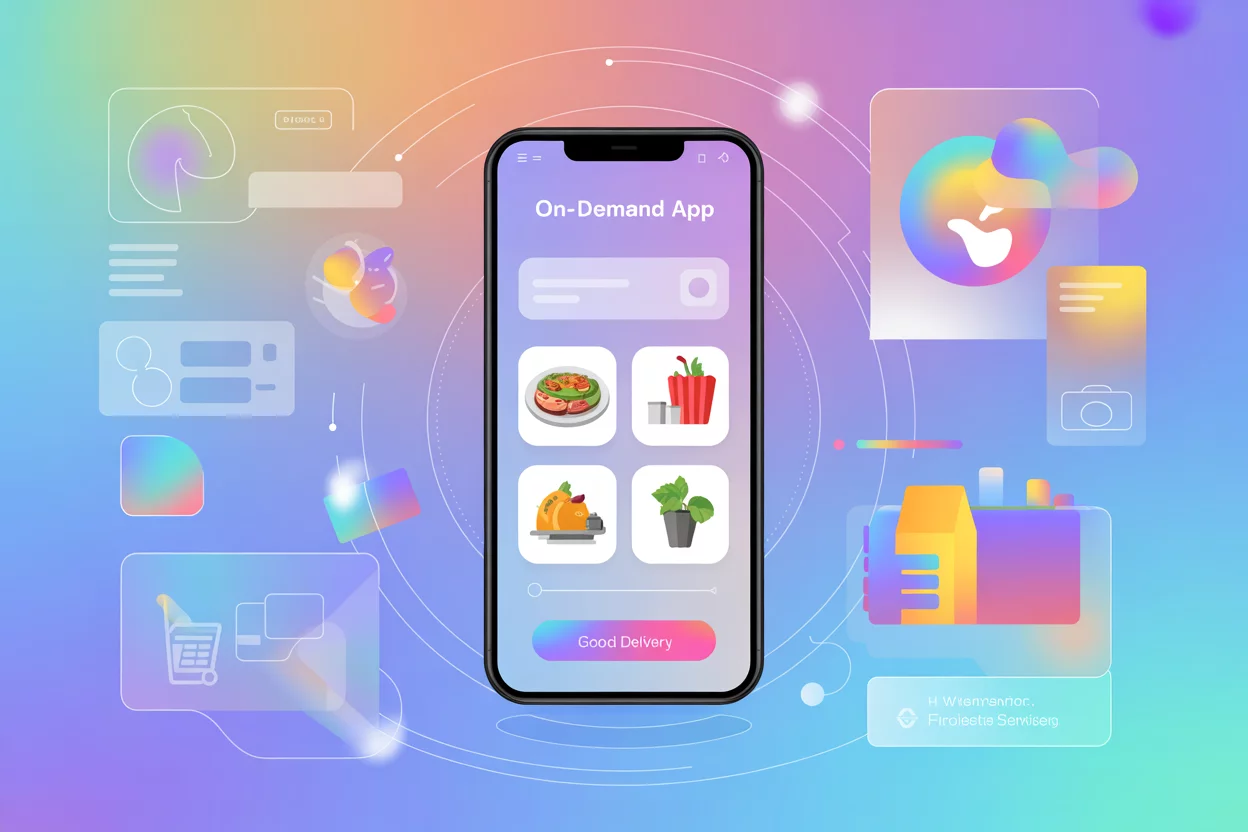Imagine building your own AI assistant – Sounds exciting, doesn’t it?
Before you begin, it’s important to consider: Should it be a powerful model capable of handling large volumes of data, a smaller and more compact version, or one optimized for speed and specific tasks?
This is where the comparison between Small Language Models (SLMs) and Large Language Models (LLMs) becomes relevant.
Language models, such as those used in chatbots form the foundation of many AI systems. LLMs like GPT-4 offer broad capabilities and deep learning potential, while SLMs emphasize speed and efficiency with fewer resource demands.
In this blog, we’ll look at how SLMs and LLMs differ, the benefits and trade-offs of each, and where they are best applied. Whether you’re exploring a custom LLM or an SLM, understanding their core features will help you choose the right solution. Let’s begin by defining each model.
What are Small Language Models (SLMs)?
Small Language Models (SLMs) are AI models built to understand and generate human language. They’re referred to as “small” because they contain fewer parameters than Large Language Models (LLMs) like GPT-3. This makes them more lightweight, efficient, and suitable for applications with limited computing resources or memory.
One of the main advantages of SLMs is their ability to run effectively on basic hardware, making them versatile for a wide range of environments. They’re ideal for situations where the full capabilities of a large model aren’t necessary. Additionally, SLMs can be easily fine-tuned for specific tasks, offering tailored performance. For businesses just beginning to explore Generative AI, SLMs provide a fast and straightforward setup. Unlike general-purpose LLMs, SLM AI models can be fine-tuned quickly for industry-specific applications.
What is a Large Language Model (LLM)?
A Large Language Model (LLM) is an advanced AI model designed to understand user input and respond in a way that resembles human communication. These models are developed using deep learning techniques, which enable them to process and generate text that closely mimics natural language.
LLMs are built on a transformer architecture, a highly complex framework that performs exceptionally well when handling large volumes of data.
This architecture includes two main components: the encoder and the decoder. When data is fed into the model, it is divided into smaller units called tokens. These tokens are then processed through a series of mathematical operations that uncover intricate relationships between them. This allows the model to recognize patterns and context, helping it provide more accurate and human-like responses to similar queries in the future.
SLMs vs LLMs: A Side-by-Side Comparison
The choice between Small Language Models (SLMs) and Large Language Models (LLMs) often comes down to factors like available resources, processing speed, and specific application needs.
LLMs excel in accuracy and flexibility, whereas SLMs focus on being cost-effective and more resource-efficient. The table below outlines the key differences between the two.
| Feature | Small Language Model | Large Language Model |
|---|---|---|
| Data Used for Training | Trained on smaller, more narrowly focused datasets | Trained using vast and diverse datasets |
| Hardware Demands | Require less computational power, faster processing, and lower memory usage | Demand more resources, slower processing, and greater memory and power |
| Training and Operation Cost | More affordable to develop and deploy | More expensive to train and run |
| Specialization | Easily adaptable to specific fields or domains | Provide broader and more generalized knowledge across multiple areas |
| Efficiency on Basic Tasks | Perform well on simple or routine tasks | Perform well to exceptionally well, depending on the task |
| Model Size | Consist of millions to several tens of millions of parameters | Contain billions to trillions of parameters |
| Handling Complex Tasks | Less capable of managing complex or nuanced scenarios | Better equipped to handle complex and layered tasks |
| Flexibility Across Topics | Limited ability to generalize across various subjects | Strong generalization and adaptability across diverse tasks and domains |
SLM vs LLM: Key Differences
Businesses looking to adopt AI solutions must start by understanding the SLM vs LLM differences to ensure successful implementation. Below mentioned are the key differences between SLM and LLM Model.
1. Model Size and Complexity
LLMs: Built with billions of parameters, these models are well-suited for managing highly complex and multifaceted tasks.
SLMs: More compact in design with fewer parameters, ideal for targeted and less demanding applications.
2. Resource Needs and Cost Efficiency
LLMs: Demand significant computational resources, resulting in higher operational expenses.
SLMs: Function efficiently on limited hardware, offering a more budget-friendly solution.
3. Performance and Accuracy
LLMs: Offer strong accuracy and adaptability across a wide range of tasks and domains.
SLMs: Deliver fast results but are best suited for narrow or task-specific applications.
4. Scalability and Deployment
LLMs: Typically require cloud infrastructure for deployment due to their large size and resource demands.
SLMs: Can be deployed on edge devices, offering greater flexibility and reduced latency.
SLM Applications in Various Industries
1. Micro Language Models in Customer Support
For industries like customer support and IoT, SLM technology offers a cost-effective way to integrate AI without compromising speed or performance. Micro Language Models, a subset of Small Language Models (SLMs), are specifically designed to manage high-volume customer support tasks. These models are optimized to grasp frequent customer concerns, understand brand-specific terms, and follow internal policy guidelines making them well-suited to deliver accurate and consistent support.
Take, for example, an IT services company using a Micro LLM trained on past support tickets, product manuals, and troubleshooting steps. Such a model can automatically resolve routine queries, guide users through solutions, and hand over complex issues to human agents. This leads to quicker responses, happier customers, and more efficient use of support staff.
2. Domain-Specific SLMs in the Healthcare Industry
SLMs are making a significant impact in healthcare by being fine-tuned to understand medical terminology, clinical procedures, diagnostics, and patient communication. Trained on structured and compliant data such as medical literature and anonymized clinical records, these models provide accurate and context-aware outputs tailored for clinical use.
They are commonly used to summarize electronic health records (EHRs), generate diagnostic suggestions from symptoms, and condense research for clinicians. Given the critical nature of healthcare, these models are also tested for mathematical reasoning to interpret medical data accurately. Techniques like specialized embeddings help preserve the structure and meaning of complex medical terms for real-world application.
LLM Application in Various Industries
1. Education and Training
Large Language Models (LLMs) can enhance education by delivering personalized learning experiences. They adapt content to suit each learner’s needs, offering tutoring support, generating customized practice questions, and explaining concepts based on individual progress and challenges.
This application makes learning more inclusive and effective. From creating educational materials like textbooks to building interactive online courses, LLMs play a key role in expanding access to quality education across the globe.
2. Content Creation
Large Language Models (LLMs) assist writers, marketers, and creatives by producing first drafts, recommending edits, and generating reports or creative pieces. This speeds up the content development process and allows professionals to concentrate on strategy and creativity instead of routine writing tasks. For content-driven industries, this is a major advantage as it enhances efficiency while maintaining high-quality output.
Factors to Consider When Choosing Between LLMs and SLMs
Choosing the right language model depends on various factors such as the complexity of the task, budget constraints, and available infrastructure. Understanding these considerations will help you determine whether an LLM or SLM is the better fit for your specific needs. Let’s break down the key points to guide your decision.
- Application Requirements
LLMs are ideal for complex tasks that involve deep reasoning, contextual understanding, and creative generation. SLMs are better suited for targeted, lightweight tasks with clearly defined objectives. - Budget
Implementing LLMs typically requires significant financial investment for training, deployment, and ongoing maintenance. SLMs offer a more cost-effective solution, making them suitable for businesses with tighter budgets. - Infrastructure
LLMs often require high-performance computing environments, such as powerful GPUs and cloud-based platforms. SLMs can run efficiently on local devices or edge environments, reducing infrastructure demands.
When to Choose LLMs
- For sophisticated use cases like natural language understanding, content creation, or AI-driven customer interactions.
- In large enterprises that handle complex workflows or massive data processing.
When to Choose SLMs
- For real-time, resource-limited applications such as IoT devices, embedded systems, and customer support bots.
- When seeking budget-friendly AI solutions tailored to specific tasks.
Final Thoughts:
The SLM vs LLM comparison makes it clear that LLMs are ideal for complex, large-scale applications that require deep reasoning, while SLMs are better suited for fast, efficient, and cost-effective solutions. Businesses prioritizing data privacy and offline functionality often lean towards implementing a local language model built on a SLM architecture. The right choice depends on your specific requirements, whether it’s advanced AI capabilities with LLMs or streamlined, real-time performance with SLMs.
At Intelegain, we develop tailored LLM and SLM solutions to meet your business needs. Our AI services are built for smooth integration, high efficiency, and easy scalability. With our experienced team, we ensure each model is optimized and aligned with your existing workflows for maximum impact. Reach out to us to get started with a solution tailored to your needs.
FAQs
LLMs are scalable due to their ability to process vast datasets, adapt to diverse tasks, and leverage cloud-based infrastructure for efficient deployment across various applications. Their transformer architecture also allows parallel processing, enhancing scalability.
LLMs learn to understand and produce human language by identifying patterns within large volumes of text data. They break down input into token sequences and use these to grasp context, meaning, and word relationships.
Yes, SLMs can run efficiently on local or edge devices without requiring heavy infrastructure or cloud connectivity.
Absolutely. SLMs are easily fine-tuned to perform well in narrow, domain-specific tasks like customer support or IoT applications.
Let’s Build Digital Excellence Together









